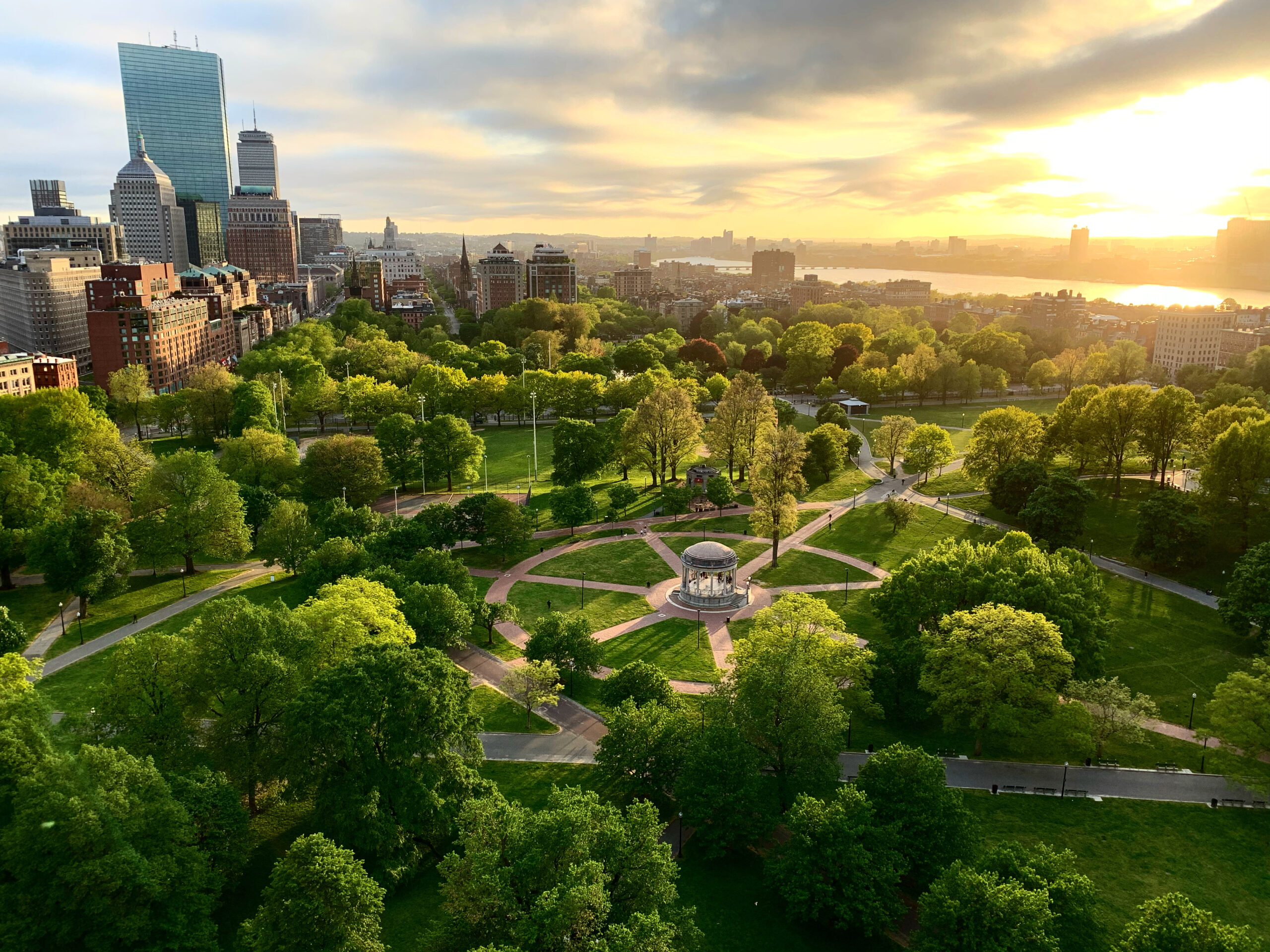Today, public parks serve as a collective backyard for city dwellers, providing them with fresh air, green grass and a chance to get out of their manmade urban environments. But in the early days of the United States, public parks served many roles.
Our own Boston Common, the oldest public park in the country, started as a farm that was then purchased by Pilgrims from an early European settler, William Blackstone, for public use. The Friends of the Public Garden, which collaborates with the City of Boston on the Common’s care and that of its sister park, recently began a Monument and Memory Task Force to acknowledge the history of the land and of the Massachusett Nation, and to highlight the stories of Indigenous life on the land prior to Colonial settlement.
This 44-acre green space in the heart of the city has been a witness to our collective American history: an eight-year Red Coat encampment; the muster of our Revolutionary soldiers, complete with visits from George Washington and John Adams; anti-slavery and civil rights protests; and a celebration of mass by Pope John Paul II.
Boston Common has played an important role in the Civil Rights movement and in commemorating the contributions of Black Americans. Civil War soldiers of the 54th Massachusetts Regiment Memorial, the first all-Black volunteer regiment, were honored in 1897 by the unveiling of a sculpture by Augustus Saint-Gaudens. This powerful tribute earned the designation of Boston African American National Historic Site.
Dr. Martin Luther King Jr. and his wife, Coretta Scott King, met while studying in Boston. On April 25, 1965, Dr. King led a civil rights march from Roxbury to Boston Common, where he addressed the crowd from the Parkman Bandstand. In 2022, the Embrace, a sculptural tribute to the Kings, was unveiled near the bandstand, featuring a Freedom Plaza that commemorates the work of local civil rights leaders.
The Common also played an essential role in Massachusetts’ leadership in public transportation, with the first T stations at Park and Boylston Streets located at the corners of the Common, and the Tremont Street tunnel running along the park, opening in 1897 as America’s first subway.
As time evolved, the Boston Common has embraced the “backyard” role, adding ballfields and the Frog Pond, a winter ice skating favorite for families and a summer cooling spot for children. Today, Boston Common is a gathering spot for the students of neighboring colleges, Emerson College and Suffolk University, and a host to cultural events.





